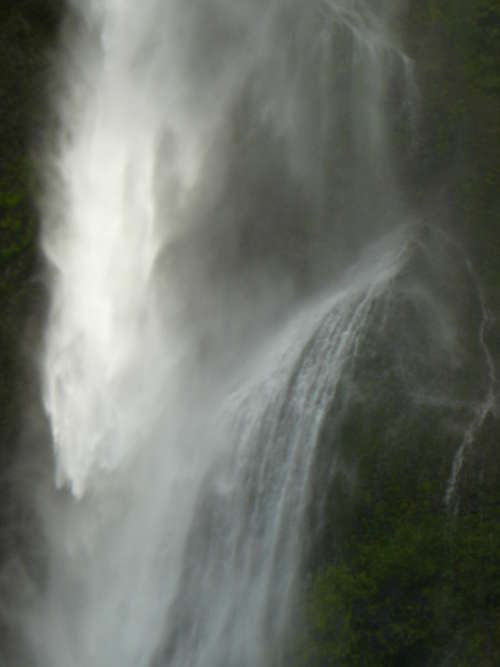 Location Taken: Multnomah Falls, Oregon
Location Taken: Multnomah Falls, Oregon
Time Taken: June 2008
When water falls, it does not have a smooth ride to the bottom, at least not on Earth. There’s rocks and trees and whatnot in the way, yes, but most of what it’s hitting is air.
It’s easy to think of air as not being there. It’s invisible and doesn’t really impede our movement unless it’s moving at a significant speed. Above all, we’re used to living in it. It may be necessary for life, but it doesn’t really affect our livelihoods in a significant way.
But it is there, and it does get in the way.
As the water comes off an edge and gets pulled downwards by gravity, it occasionally hits an air molecule. And as the air and the water mix and separate more and more, the falling water turns into falling fog.
It takes a pretty long fall for a significant percentage of the water to turn to vapor. And it has to be a direct drop rather than a more rapids-style waterfall. Air is lighter than water, after all, and if there’s no way for it to get under the water, well, there’s no way for vapor to be produced in this fashion.
As soon as that vapor hits something, though, it turns back into normal water. The air escapes and the water clings to the surface of whatever it landed on.
Well, until enough water hits that surface for the weight of the drop to exceed the surface tension of the water, and gravity takes over once more.
